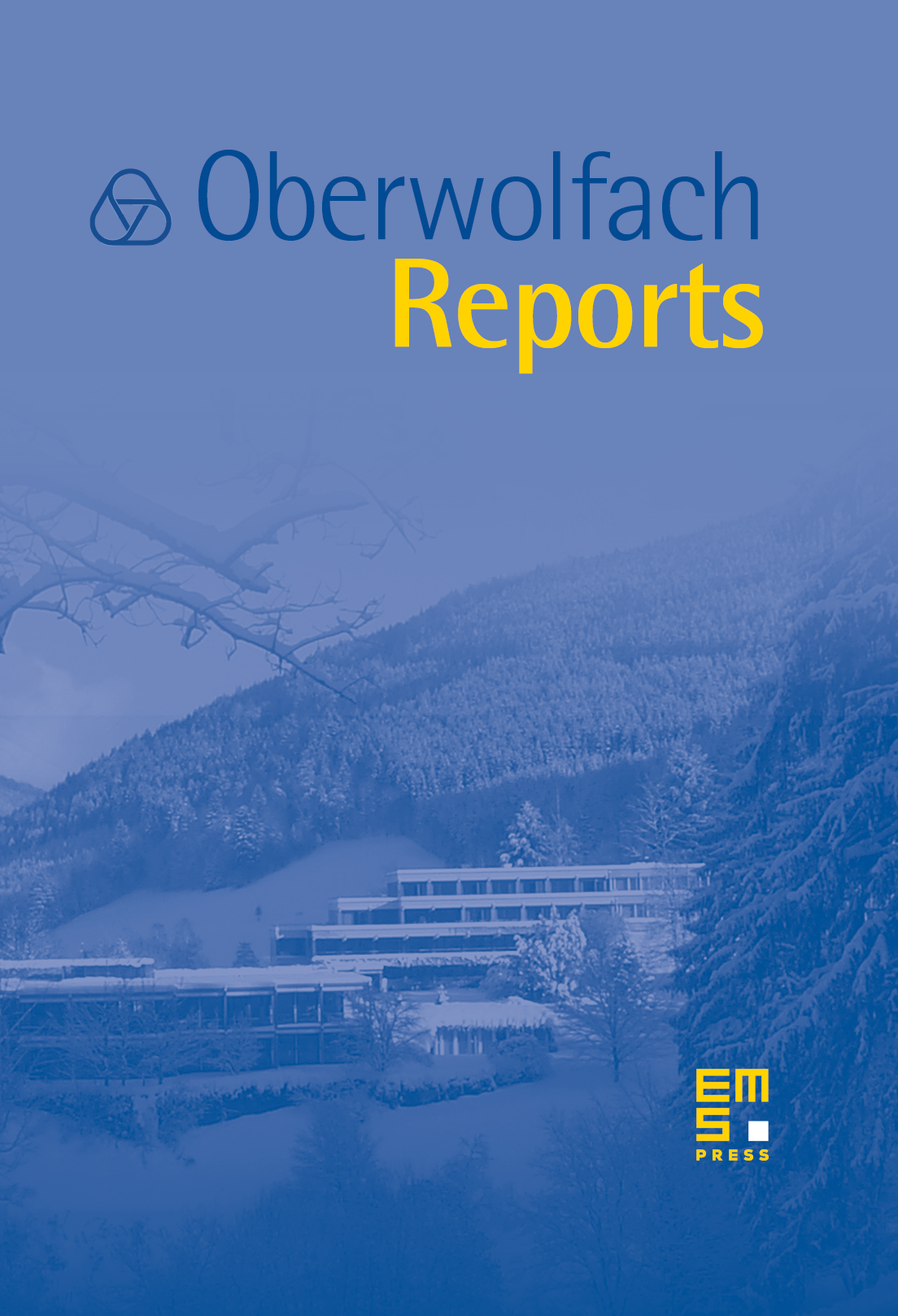Dynamical System Methods in Fluid Dynamics
Jerrold E. Marsden
California Institute of Technology, Pasadena, United StatesJürgen Scheurle
TU München, Germany

Abstract
The workshop was organized around the following classical as well new and emerging techniques. Traditional methods in fluid mechanics continue to be invigorated with the infusion of ideas from dynamical systems, geometric methods, multiscale analysis, new developments in scientific computation, and control theory. The specific themes of the workshop were as follows:
- Dynamical Systems, Geometric, Analytical, and PDE Methods. The meeting presented recent advances in these basic tools that are of importance to fundamental investigations in fluid mechanics, with an emphasis on those tools that are relevant to one of the following topics.
- Mixing in Geophysical Flows. Recent investigations using finite time Lagragnian coherent structures and invariant manifolds have proven useful in specific investigations involving mixing and transport in oceanographic flows and in flows in bays and estuaries.
- Control. There are interesting investigations underway involving optimization and applications to, for example, coordinated control of groups of underwater vehicles. The dynamics and control of these vehicles as well as how their motion interacts with ambient (highly time dependent) currents in the oceans are of importance for emerging studies on sensing and the gathering of oceanographic data. Other work on control theory, such as locomotion of articulated bodies in fluids, as well as control of separation and cavity oscillations was also represented at the meeting.
- Computational Methods. Recent discrete formulations of fluids have led to algorithms that have, for example, an exact discrete Kelvin theorem. The meeting expored the developments of these algorithms and their application to geophysical and other flows in which vorticity (or potential vorticity) is important. Several groups worldwide have been investigating these aspects.
- Interface Problems. There is much current interest in interface problems in fluid mechanics, such as two and three phase flows and the ocean-atmosphere interface. Recent mathematical methods in this area include level-set methods and phase-field methods.
- Symmetry Methods. Techniques such as the Karhunen–Loève decomposition, self-similarity, pattern formation, stability and bifurcation, can greatly benefit from the use of symmetry methods, including computational speed-up.
- Averaged Euler and Navier Stokes Equations. These models for fluids have all the structure of standard fluid mechanics and have computational properties similar to LES (large eddy simulation). The conference presented progress in this area with emphasis on turbulence calculations and wall bounded flow, both for incompressible and compressible flows.
- Vortex Dynamics. Vortex methods, vortex filaments, investigated for their Hamiltonian structure and as a computational tool continues to be an exciting and active area for both geophysical flows and turbulence as well as for its intrinsic mathematical interest.
Structure of the Meeting. The meeting had a balance of senior researchers, postdoctoral fellows and graduate students. Consistent with the general approach advocated by Oberwolfach, we selected about 20–25 people to give a lecture at the meeting. They suggested students, postdoctoral fellows and junior faculty all of whom participated through two poster sessions.
Posters. The poster session was one of the most interesting aspects of the meeting. The organizers decided to award prizes for the best poster and an ad hoc committee (consisting of Friedlander, Haller, Reich, Marsden and Scheurle) was formed to choose the four best posters. This number matched the number of gifts that were available. The winners were (in alphabetical order):
- Francois Gay-Balmaz, Lausanne, Sphere actions on chains of Hilbert manifolds and applications to fluid dynamics. Prize: a copy of A Mathematical Introduction to Fluid Mechanics by Alexandre Chorin and Jerrold Marsden.
- Juan Meli-Huber, Princeton, Motion planning for an articulated body in a perfect fluid. Prize: a copy of Chaos near resonance by George Haller.
- Mustafa Sabri Kilic, MIT Reduced Navier–Stokes equations near a flow boundary. Prize: a copy of Simulating Hamiltonian Dynamics by Ben Leimkuhler and Sebastian Reich
- Amit Surana, MIT Kinematic theory of separation in 3D fluid flows. Prize: a copy of The -Vortex Problem. by Paul Newton.
Impressions, Connections, Insights. The mixture of participants, from those who were very applied and those who came from a more of a dynamical systems background, but all with a strong mathematical dedication, was very fruitful.
Dynamical systems methods have now started to be utilized successfully for the study of complex real fluid systems, from controlled man-made experiments to multi-scale and multivariate natural dynamics, from oceanic motions to flows around jellyfish. Dynamical system approaches are then applied to complex data, models or combinations thereoff. There is a wide range of research opportunities, including the possibilty for new theoretical and methodological progress.
Amongst the specific new connections and insights that were gained, the power of dynamical systems ideas, such as invariant manifolds or Lyapunov exponents, seemed to be quite impressive as well as useful in the context of metereology as well as oceanography. The use of dynamical systems ideas in control of fluids (separation and cavity oscillations, for example) was also quite interesting for a number of the participants.
Cite this article
Jerrold E. Marsden, Jürgen Scheurle, Dynamical System Methods in Fluid Dynamics. Oberwolfach Rep. 2 (2005), no. 3, pp. 1929–1982
DOI 10.4171/OWR/2005/34